Junk in the Trunk: A Guide to Paris Antiques, Brocantes and Vide-Greniers
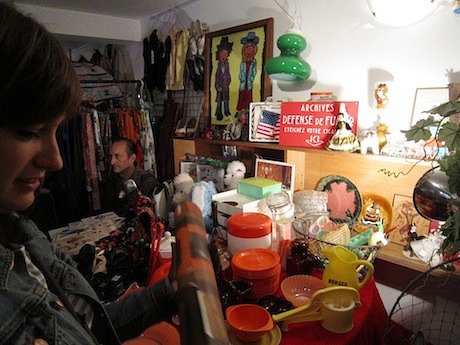
Mon 18 Apr 2011
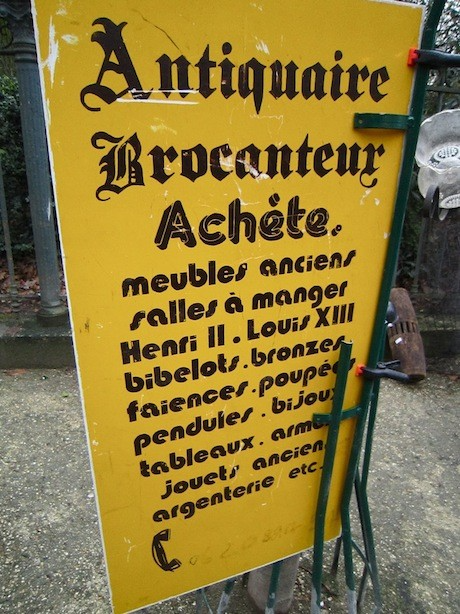
So you’ve come to Paris, land of refinement and taste, of history and style, and you want to bring back a piece of that ephemeral old beauty with you. But in your search for souvenirs, the gap is wide between the cheap, dime-a-dozen Eiffel Tower replicas hawked by sellers on the street and the expensive wares of specialty boutiques. Wine is always great but seems so obvious, and it’s difficult to get home (and then there’s always the possibility that you’ll drink it before you get there). If you’re looking for a truly unique souvenir for yourself or loved ones back home, you don’t have to spend a fortune, and you don’t have to buy an ill-fitting “J’aime Paris” T-shirt. Parisians treasure heritage and objects built to last (and last beautifully), and the city boasts a wide and stunning variety of oddities and worldly gems. The Paris antiques at vide-greniers and brocantes are some of the best souvenirs that I and my (chicly) slim wallet have found during our travels. After all, souvenir is a French word.
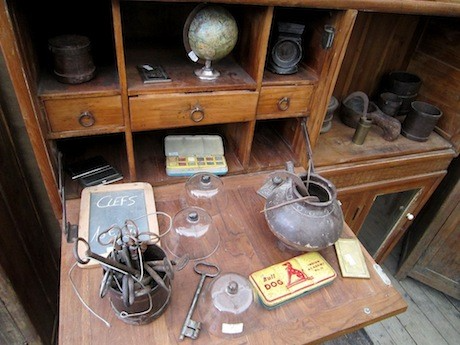
Occurring throughout the year, these secondhand sales tend to be most frequent in April and May. Though they both have flea-market qualities, brocantes tend to have sellers who focus on specific items (antique keys, vintage handkerchiefs), while your typical vide-greniers (which is French for “empty the attic”) are more like a neighborhood garage or stoop sale: regular people selling a wide array of their personal belongings to make an extra buck.
These sales can range from folding-table sidewalk sales of one man’s dusty trash to organized, indoor affairs featuring crêpe stands and even live music for you to enjoy during your perusal of Paris antiques. During the prime months of April and May, you’re sure to stumble on one or two outdoor sales, but if you’re planning to go on a specific day or in a certain arrondissement, do some online research ahead of time. Brocabrac Paris and Points de Chine are both great resources for planning your treasure dig.
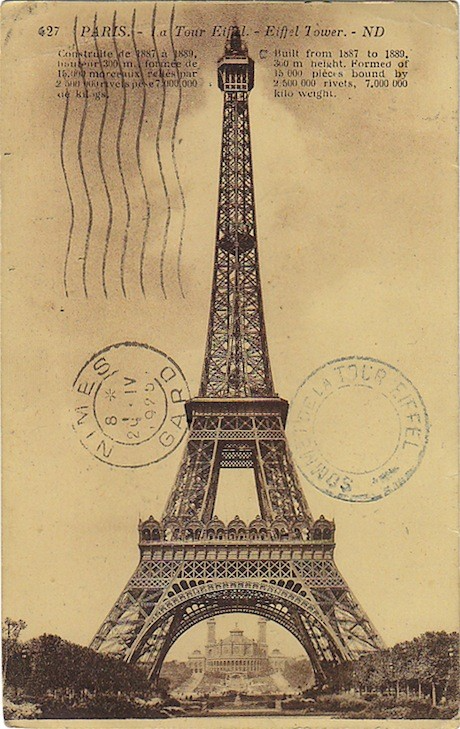
At these markets you’ll see the expensive (as in furniture), but you’ll also find the pas cher and sweet (boxes of antique Paris postcards, with and without writing, for half a euro apiece). I’m not going to lie: some of this stuff is crap. These are, after all, flea markets. But this is Paris, not a road stop in the Midwest. (No offense to our Midwestern readers.) If you’re willing to browse and to see the potential in used items, you just might strike gold. Here are some tips for good brocante-ing.
• DO get creative, go with an open mind and really think about whom you’re buying for. A good friend of mine hand-makes stationery and paper art, so when I found a crate full of intact, vintage sewing patterns for 1940s dresses and men’s suits for a euro each, I bought a pile. One measly euro each for a gift she freaked out over. A 1950s neckerchief for my most romantic Paris-loving friend and a pair of vintage tiger-eye cuff links for my brown-haired businessman brother have now become special-occasion fare in their respective wardrobes.
• DO be nice, and DON’T be afraid to haggle. As with anywhere else, an easy smile and the effort to speak just a word or two of French helps win the favor of any Parisian. After a pleasant Franglish conversation with a vendor at a brocante, I snagged a French Batman and Catwoman comic book for my younger brother by walking away because I only had 5 euros on me (not the 15 euros the seller wanted). The guy ran after me and insisted I could just pay the 5 euros.
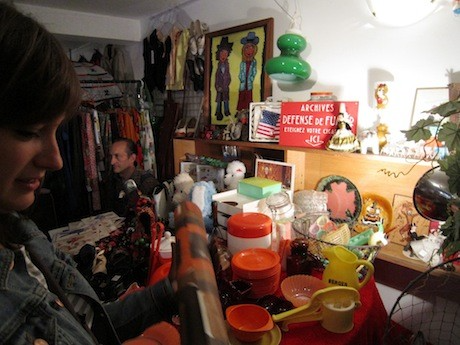
• DON’T be afraid to walk away, but know that if you do, you could lose out on that item you’re just not sure about. It could very well be that after deciding to think about it, then walking around the remaining block (or two, or three) and coming back, ready to purchase, you will find that it’s already been bought. I really wish I’d bought one of these adorable old telephones, but when I came back 10 minutes later, they were both gone. Then again . . .
• DO think about the logistics of what you’re buying and how it will transport. A girlfriend of mine was so excited to snag a good-condition violin for her nephew in the States. She loved that she would always be able to tell him the story of the 24 hours she spent in Paris and the shining violin that she found for him at a street sale. But then she had to carry it back on the train to Geneva, then keep it during her next semester in Bangkok, and finally get it back to Arizona for its final hand delivery. We were just glad we talked her out of buying the torso-tall birdcage she had her eye on.
Similarly, I fell absolutely in love with a stunning vintage twin-bell gold alarm clock, still fully functional. Oh yes, functional. Hours after I bought it, its scream awoke me at 2 a.m., and I realized that I would not be able to stop its loud ticking. It would have to run itself out. Which was not good for my flight home a few days later—as it turns out, airport security is not amused by things ticking in your suitcase, even if they are Parisian antiques.
• DO remember that there’s always la Poste!
Besides being authentic, unusual places to visit in Paris, brocantes and vide-greniers present the opportunity to snap up some real treasures. From the strange and wonderful to the simple and sentimental, it’s easy to find a genuinely memorable keepsake at one of the many secondhand sales. Even if it’s just for that special someone who deserves no less than tetanus.